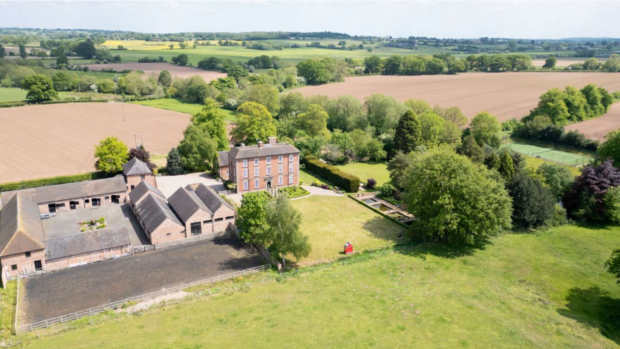Looking for an equestrian property? Check out the H&H property database >>
William Grant, of rural and equestrian agent Fox Grant, has no doubt that, over the coming years, Britain will see a substantial increase in supply of agricultural land and outbuildings.
Land sale volumes are at a 15-20 year low, he says. There is only one way they can go and that is up.
Its not only a matter of statistical trends. The reform of the Common Agricultural Policy replaced production-linked subsidies with a single farm payment. Until last year, there was confusion over the parameters of this new payment, leading many farmers to hold onto their land and outbuildings.
Now, however, they have a much clearer idea of how the reform will affect their finances, and many are weighing up whether to sell. Their decision is crucial to equestrian buyers, who have traditionally bought converted farmhouses and barns.
Savillss report on the agricultural market shows farmland supply increased by 35% last year. It predicts more land will come up for sale, although it will remain well below the levels recorded in the pre foot-and-mouth years.
Grant believes a lot more land will come on the market now the new subsidies are kicking in.
Farmers have their lump single farm payment, and will be keener to sell buildings and land, he says. The log jam of land not sold over the last three years is likely to come to the market this year.
Although other agents, such as Edward Russell of Bidwells and Richard Greasby of Butler Sherborn, are more prudent in their forecasts, the general consensus is that supply of farmland and buildings will rise. This is because even farmers who decide to stay in business may be tempted to reduce the scale of their operations and sell the odd paddock and barn to raise fresh capital.
In the south east, the value of agricultural land is £3,500 to £5,000 per acre, says Diana Rowell of Churchill Country & Equestrian. We value equestrian land at £4,000-£8,000 per acre, while pony paddocks can be worth considerably more up to £15,000 per acre. Therefore, selling small parcels of land to equestrian buyers would be an option for farmers.
Similarly, as Mike Giffin of Guy Leonard points out, an increasing number of farmers are seeking to diversify by gaining planning permission on buildings that are no longer required, and letting them out to riders.
Equestrian buyers hoping to pick up some bargains, however, are likely to be disappointed. First, as Greasby warns, few of the smaller plots of land on offer will suit professional competitors and establishments. And, more importantly, the surge in supply will be more than matched by the relentless hunger for acres, some of which is now coming from within the farming world.
The Savills report shows that, after bottoming out in 2003, 50% of agricultural land purchasers are now farmers. Add to this that competition from lifestyle buyers remains strong, and it is easy to see why riders may have a tough time trying to climb up the property ladder.
A bullish Grant forecasts a growth of up to 10% in West Country farm values, while Greasby delivers a blow to whoever hopes to buy in the ever-popular Cotswolds.
Equestrian buyers, depending on their resources, might well be squeezed out of many opportunities, since they will be competing with a strong residential market, which is the key driver in the Cotswolds, he says.
But this is good news for equestrian vendors. A good farmhouse, with a decent amount of land, is highly prized by those who wish to keep a few horses, he says. And these properties will continue to sell very well.
Looking for an equestrian property? Check out the H&H property database >>



